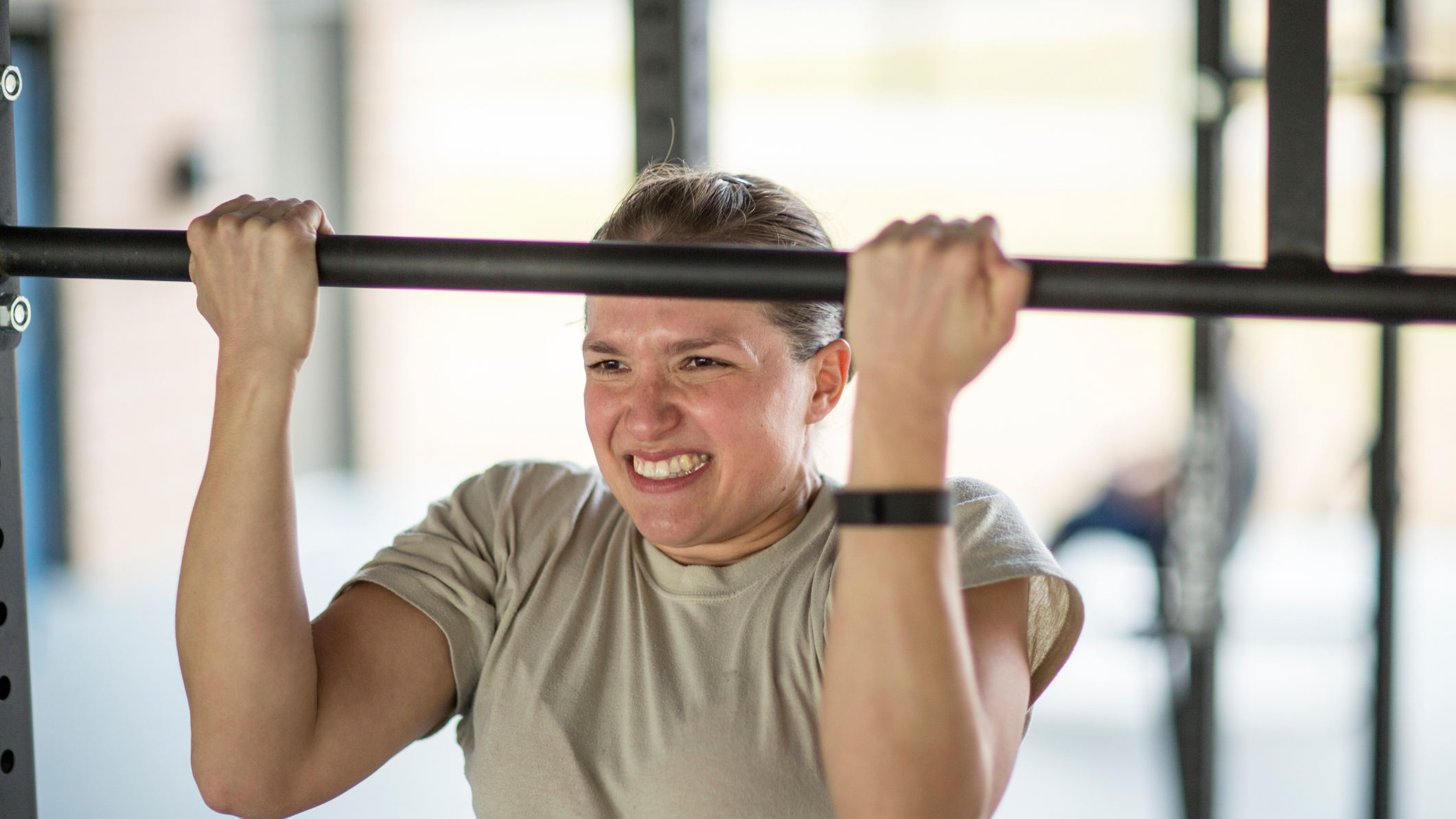What's the difference between pull-ups and chin-ups for building muscle?
Aren't they the same thing? Here's how to understand the differences between pull-ups and chin-ups


When it comes to building upper-body muscle using just your body weight, the pull-up is king. Hefting your body weight up and down using only your arms, whether doing pull-ups or dips or anything in between, is the gateway to getting stronger using calisthenics. We've got a comprehensive guide to learning how to do pull-ups and dips here.
However, there are several different kinds of pull-up: the overhand grip (referred to from hereon as simply a "pull-up" and the underhand grip (referred to as a "chin-up". There are also neutral-grip pull-ups, which are performed on parallel bars with your hands facing each other.
Chin-ups are usually thought to be the easiest. This takes the load off your back muscles, which are not often used and difficult to train in day-to-day life, and places the load on your biceps and pectoralis major. The overhand pull-up, meanwhile, removes the emphasis on these muscles to work your traps, latissimus doris and other back muscles. Overhand pull-ups are generally thought to be harder. Neutral-grip pull-ups, with your hands facing each other, are of medium difficulty in between the two.

A study from the Journal of Strength and Conditioning Research examined the muscle activation when performing chin-ups and pull-ups. The pectoralis major and biceps brachii had higher activation during the chin up than during the pull up. The pull up had greater activation of the lower trapezius than the chin up. Neutral grip pull-ups weren't measured, but rotating pull-ups used with specialist devices or gymnastics rings don't provide any additional benefit.
If you're looking to develop more pulling power in your arms, and work your chest at the same time, chin-ups are a great way to train for that. It's also easiler to get started doing chin-ups than it is doing pull-ups. However, we recommend learning how to do overhand pull-ups as well, because while it also trains the biceps, it hits so many back muscles neglected in normal life.
Learning to do pull-ups is a slow, but rewarding process. You can use resistance bands or gym machines to simulate the pulling-down motion, negatives to jump up and slowly lower yourself down, and assisted pull-ups, again using bands or gym machines. As part of a Fit&Well challenge, I took on the task last year of learning how to do 10 pull-ups and detailed my process here.
I was using Olympic rings attached to a tree, as the gyms were closed and no pull-up bars were nearby. I began in an overhand position and rotated my hands 90 degrees during the exercise, ending each pull-up in the neutral-grip position below.
Start your week with achievable workout ideas, health tips and wellbeing advice in your inbox.

This was done partially because I wasn't advanced enough to do 10 strict pull-ups from an overhand position – my back muscles weren't developed enough – and it also compensated for the natural rotation of the rings.
However, you can get a doorframe pull-up bar to help you perform chin-ups and pull-ups at home, and a set of the best adjustable dumbbells to help keep your biceps, chest and back at its best.
Matt Evans is an experienced health and fitness journalist and is currently Fitness and Wellbeing Editor at TechRadar, covering all things exercise and nutrition on Fit&Well's tech-focused sister site. Matt originally discovered exercise through martial arts: he holds a black belt in Karate and remains a keen runner, gym-goer, and infrequent yogi. His top fitness tip? Stretch.
